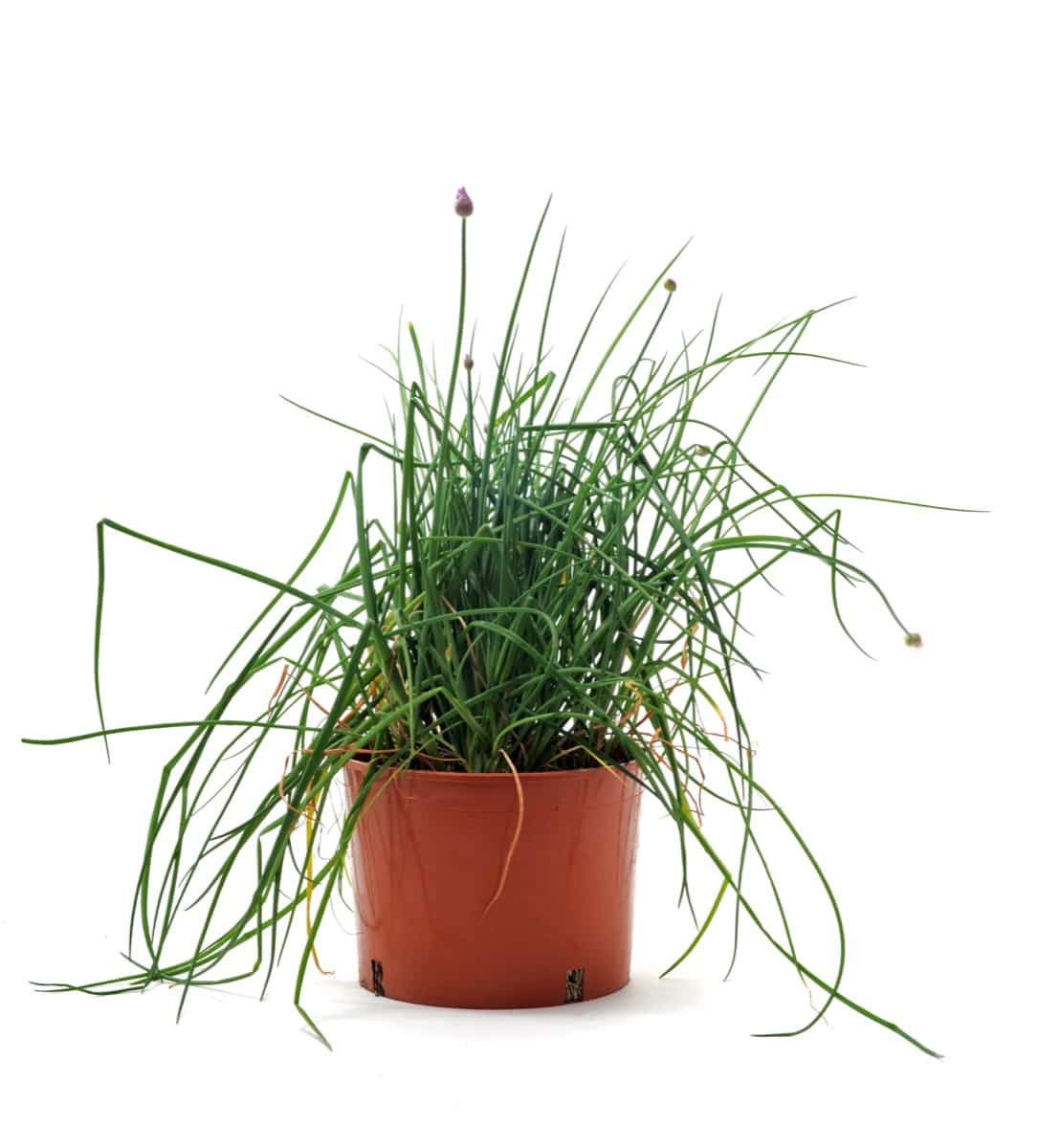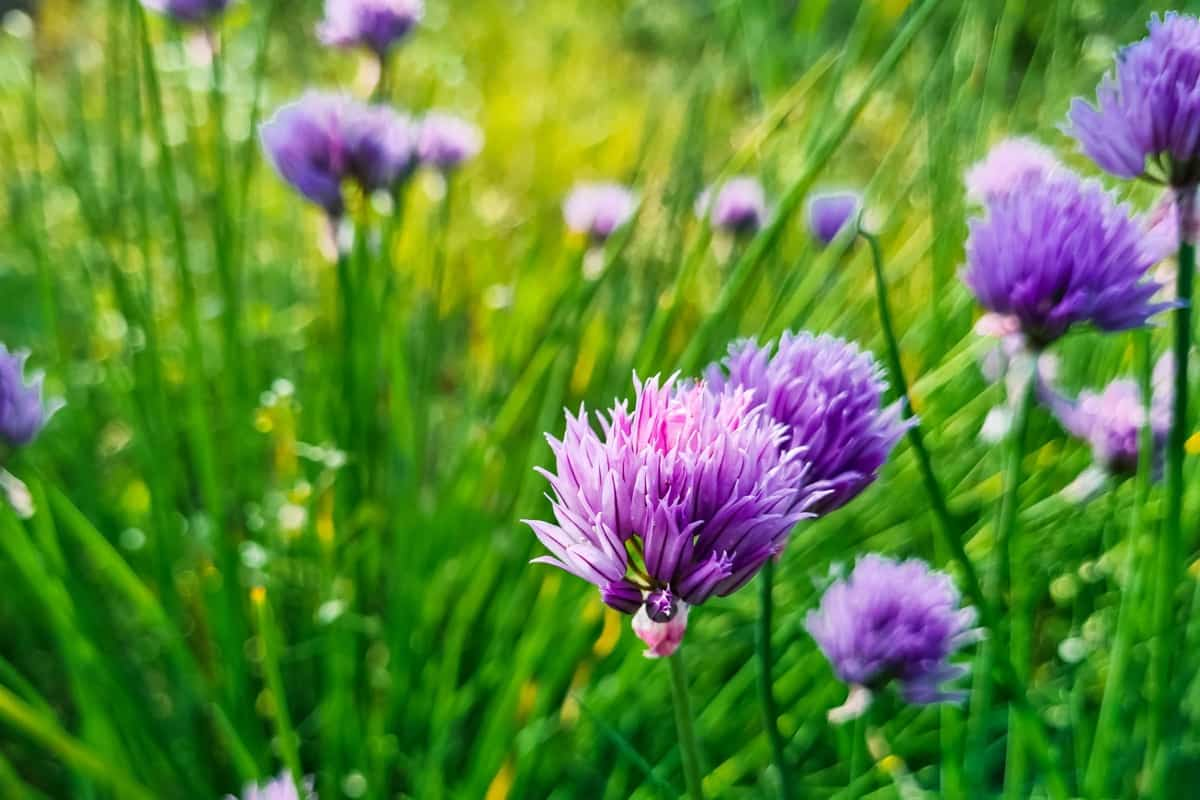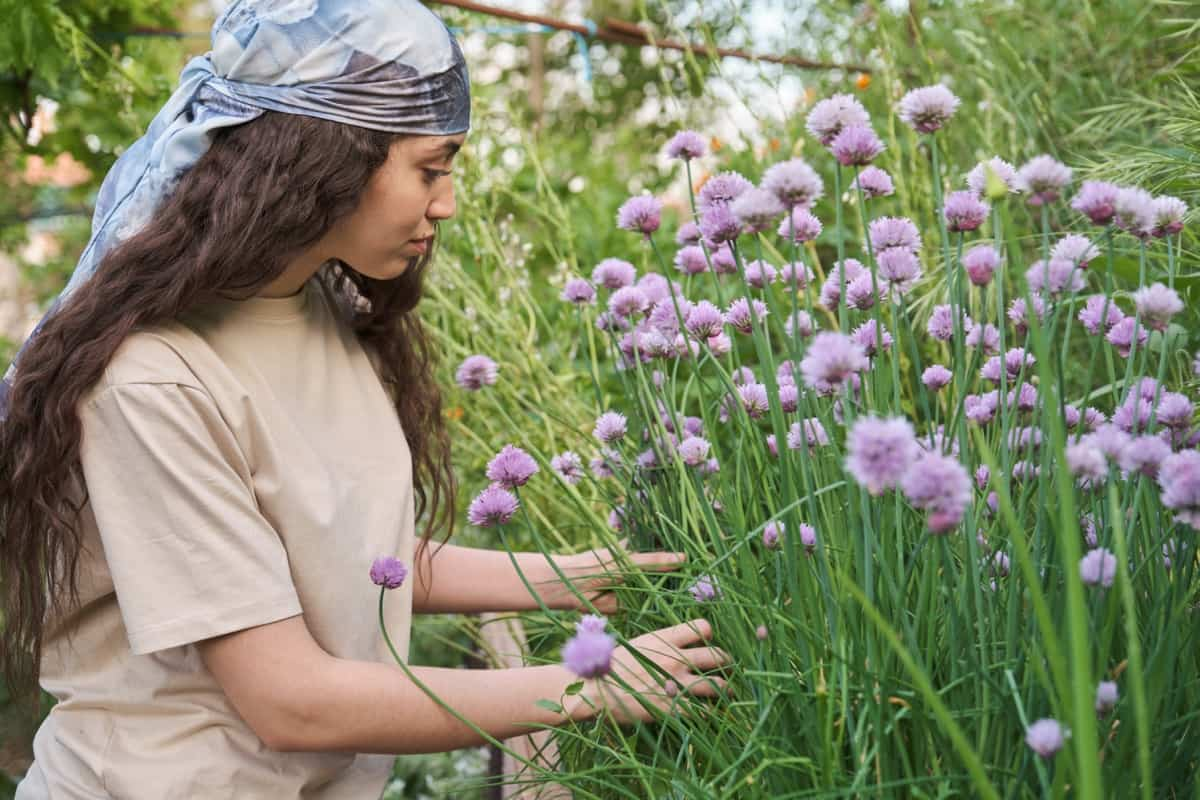Growing and caring for Chives can be a rewarding experience, whether you have a garden or just a small windowsill. These versatile herbs add flavor to your dishes and provide numerous health benefits. Remember, Chives go through different stages of growth, from seedling to maturity. Understanding these stages will help you provide the necessary care at each phase.

Whether you grow them from seeds, in water, or indoors, ensure they receive adequate sunlight and moisture. For those without outdoor space or during colder months, cultivating Chives indoors using containers or pots placed near bright windowsills or under grow lights is possible. Regular maintenance tasks such as pruning spent flowers and dividing clumps every few years will help keep your Chive plants healthy and productive throughout their lifespan.
How to Grow and Care for Organic Chives
Step-By-Step Guide on How to Plant Organic Chives from Seeds
Planting organic Chives from seeds is a simple and rewarding process. Choose a spot, or prepare containers with well-drained soil. Chive seeds can be sown directly into the soil or started indoors. Before planting, it’s important to prepare the soil by removing weeds and loosening it with a garden fork or tiller. Next, create small furrows about ¼ inch deep and space them at least 12 inches apart.
Gently sprinkle the Chive seeds along the furrows, keeping them evenly spaced. Keep the soil moist during germination, which typically takes 7-10 days. Once the seedlings emerge, thin them out to be spaced approximately 6 inches apart. Regular watering is essential as your Chive plants grow to keep them healthy and thriving. Provide about one inch of water per week to prevent drought stress.
Tips for Growing Organic Chives in Containers or Raised Beds
Growing organic Chives in containers or raised beds is a great way to have a fresh supply of this versatile herb at your fingertips. Choose a pot with good drainage and sufficient depth for root growth. A raised bed should be at least 6-8 inches deep. Fill your container or raised bed with rich, well-draining soil high in organic matter. This will provide the necessary nutrients for healthy Chive growth.
In case you missed it: How to Grow Chives from Seed: A Detailed Planting to Harvesting Guide for Beginners

Chives thrive in full sun, so place your containers or raised beds in an area that receives at least six hours of direct sunlight daily. Apply a layer of mulch around your Chive plants to conserve moisture and suppress weeds. Feed your Chives with natural fertilizers such as compost tea or seaweed extract every few weeks during the growing season. Trim off any flowers that appear on your Chive plants to encourage continuous leaf production and prevent self-seeding.
Organic Methods for Caring and Nurturing Chive Plants
Organic methods for caring for and nurturing Chive plants are essential to ensure healthy growth and abundant harvest. Maintaining proper soil health is crucial for organic Chive cultivation. Regularly adding compost or aged manure ensures that the soil is well-draining and high in organic matter. This will improve soil structure and provide necessary nutrients for the plants. Watering practices should be mindful of the Chive’s moisture requirements. While they prefer consistently moist soil, overwatering can lead to root rot.
Water deeply but infrequently, allowing the top inch of soil to dry out between waterings. Weeds compete with Chives for nutrients and resources, so staying vigilant in weed control is vital. Regularly remove weeds by hand or use mulch around the plants’ base to naturally suppress weed growth. Consider companion planting with herbs such as Garlic or Marigolds to protect against common pests like aphids or onion flies. These companions act as natural repellents, attracting beneficial insects that prey on harmful pests.
Pruning spent blossoms encourages continuous leaf production in Chives. Regularly snip off faded flowers just above a set of healthy leaves to redirect energy toward foliage growth. Avoid using chemical fertilizers and opt for organic alternatives instead. Compost tea or seaweed-based fertilizers can provide essential nutrients without harming beneficial organisms in the soil.
In case you missed it: 12 Common Chive Plants Problems: How to Fix Them, Solutions, and Treatment

Harvesting Techniques for Organic Chives to Ensure Continuous Growth
Harvesting Chives is a rewarding experience and crucial in ensuring their continuous growth. When harvesting Chives, it’s important to remember that they grow from underground bulbs, so leaving enough foliage on the plant for photosynthesis and energy production is essential. Snip off individual leaves at the base using sharp scissors or shears.
Avoid cutting too close to the ground, which may damage the plant. Practicing proper harvesting techniques is important to ensure the continuous growth of your organic Chive plants year after year. Snipping off leaves instead of pulling them out by their roots or damaging the plant encourages strong regrowth and ensures a bountiful supply of fresh herbs whenever needed.
Companion Planting Ideas for Organic Chives and Their Benefits
Companion planting is a clever gardening technique that involves growing different plants together to reap mutual benefits. Several companion plants can enhance their growth and repel pests naturally regarding organic Chives. One great companion for organic Chives is Tomatoes. These two plants share similar growing conditions and can support each other’s growth. Chives help deter aphids, common tomato pests, while tomatoes provide shade for the delicate Chive leaves.
Another beneficial companion for Chives is Carrots. Carrots help break up the soil, making it easier for the Chive roots to penetrate and absorb nutrients. In return, Chives repel carrot flies with their strong scent. Marigolds also make excellent companions for organic Chives. Their bright blooms add beauty to your garden and act as natural pest repellents. Marigolds release chemicals into the soil that deter nematodes and other harmful insects from attacking your precious Chive plants.
Chives Growing Stages
Chives can be grown easily in your garden or indoors. Understanding the different stages of Chive growth will help you cultivate healthy and thriving plants. The first stage is seed germination. Chive seeds typically take around 2-3 weeks to germinate. It’s important to keep the soil moist but not overly saturated during this time. Once the seeds have sprouted, the second stage begins plant establishment.
This is when the Chive seedlings start developing their roots and growing more leaves. It’s crucial to provide adequate sunlight and water regularly during this stage. As the Chives continue to grow, they enter the third stage: maturity. Mature Chives will have thick stems and abundant foliage. This is when you can start harvesting them for culinary use. Regular pruning is essential to maintain healthy plants encourage new growth, and prevent overcrowding. Removing dead or yellowing leaves will also promote better air circulation around the plant.
In case you missed it: Growing Chives in Pots, Planting, Care – A Full Guide

How To Grow Chives in Water?
Chives are versatile and easy-to-grow herbs that can thrive in various environments, including water. Growing Chives in water is a great option for those who don’t have access to a garden or want to cultivate them indoors. To start growing Chives in water, you will need a container with drainage holes and some pebbles or stones for support. Fill the container with clean water, ensuring it covers the Chive stems’ bottom inch.
Place the Chive cuttings into the container, ensuring they are submerged but not completely covered by water. The roots will develop over time, taking up nutrients from the water. Changing the water every few days is important to prevent stagnation and keep it fresh. This helps maintain oxygen levels necessary for healthy growth. Additionally, adding liquid fertilizer every two weeks can provide essential nutrients.
Natural Pest Control Methods for Protecting Organic Chive Plants
When it comes to growing organic Chives, one of the challenges many gardeners face is dealing with pests. First and foremost, prevention is key. One effective way to deter pests from attacking your Chives is by companion planting. Chives have a strong aroma that repels insects such as aphids and carrot flies. Consider planting them alongside other vegetables or herbs that attract beneficial insects like ladybugs or lacewings, which feed on common garden pests.
Homemade sprays are another natural pest control method for protecting organic Chive plants. Garlic spray, for example, can be easily made by crushing garlic cloves and mixing them with water in a spray bottle. This pungent concoction acts as a deterrent for various types of pests. You may also want to consider introducing predator insects into your garden ecosystem. Practicing good garden hygiene plays a vital role in keeping pests at bay. Remove dead leaves or debris around the Chive plants regularly, as they attract unwanted visitors.
Essential Soil and Watering Practices for Organic Chive Cultivation
Essential soil and watering practices are vital in successfully cultivating organic Chives. Providing the right conditions for these herbaceous plants is important to ensure optimal growth. Chives thrive in well-draining soil that is rich in organic matter. Before planting, prepare the soil by incorporating organic matter to improve its fertility and moisture retention capabilities. Regarding watering, Chive plants prefer consistent but not excessive moisture levels.
In case you missed it: How to Grow and Care for Organic Chamomile: Planting Instructions

Water them deeply once or twice a week, depending on weather conditions. Mulching around Chive plants can help retain soil moisture while suppressing weed growth. A layer of organic mulch will do wonders in maintaining the ideal moisture balance for your Chives. In addition to proper soil and watering practices, monitoring your Chive plants for signs of stress or nutrient deficiencies is important. Regularly check the soil pH and adjust using natural amendments like lime or sulfur if necessary.
Pruning And Dividing Organic Chives for Optimal Growth
Pruning and dividing organic Chives is essential for promoting optimal growth and maintaining the health of your plants. Regularly pruning your Chive plants can encourage new growth and prevent them from becoming overcrowded. To prune Chives, snip off any dead or yellowing leaves.
This will not only improve the appearance of your Chives but also stimulate fresh growth. Remember to use sharp scissors or garden shears to avoid damaging the plant. Dividing Chive plants is another technique that helps rejuvenate and expand their growth. It involves separating clumps of mature Chives into smaller sections, which can be replanted in different areas or shared with fellow gardening enthusiasts.
To divide Chive plants, carefully lift them from the ground using a garden fork or trowel. Gently separate the clumps into individual bulbs, ensuring each division has attached roots. Replant these divisions in well-prepared soil with adequate spacing between each plant. Regularly pruning and dividing organic Chives promotes healthy growth and prevents disease and pest infestations by improving air circulation around the plants.
Organic Fertilizers and Amendments for Nourishing Chive Plants Naturally
Organic fertilizers and amendments are crucial in nourishing Chive plants naturally, ensuring their optimal growth and productivity. These environmentally friendly natural alternatives provide essential nutrients that promote healthy development. One of the most popular organic fertilizers for Chives is compost.
Composting kitchen scraps, yard waste, and other organic materials results in nutrient-rich soil amendments that can be added to the planting area or used as a top dressing around established plants. This helps improve soil structure, retain moisture, and slowly release nutrients. Another effective option is bone meal, an excellent phosphorus source—a vital nutrient for root development.
Sprinkle a small amount around the base of each Chive plant during planting or apply it as a side dressing throughout the growing season. In addition to compost and bone meal, seaweed extract is used as a foliar spray to provide trace minerals and enhance overall plant health. Dilute the seaweed extract according to package instructions and apply it directly on the leaves every few weeks during active growth periods.
In case you missed it: Best DIY Homemade Rooting Hormone Ideas

Conclusion
Growing and caring for organic Chives can be a rewarding experience in terms of the delicious flavor they add to your dishes and the satisfaction of knowing you are cultivating a healthy, natural herb. To keep your organic Chives thriving, practice good weed control by regularly removing unwanted vegetation.
Regular harvesting will encourage new growth and ensure a continuous supply throughout the season. By opting for organic methods instead of synthetic pesticides and fertilizers, you contribute towards maintaining a healthier ecosystem while enjoying chemical-free produce that is safe for consumption.
- How to Grow Tomatoes Organically at Home: A Comprehensive Guide
- Organic Gardening on a Budget: Low-Cost Methods and Materials
- Gongura Seed Germination and Planting Methods
- Cabbage Seed Germination and Selection
- Broccoli Seed Germination and Selection
- Asparagus Seed Germination and Variety Selection
- Seasonal Flower Gardening: Best Practices for Spring, Summer, Fall, and Winter
- How to Grow Hibiscus from Flower
- Plantation Ideas for Home Decoration: A Beginners Guide
- Flower Garden Designs and Layouts for Beginners
- Planting and Spacing Techniques in Papaya: A Beginner’s Guide
- Growing Gold: Essential Techniques for Planting Pineapples
- How to Make Kalanchoe Plant Bushy: Home Remedies and Solutions
- 11 Reasons Why Your Gardenia is Not Blooming: Home Remedies and Solutions
- Eco Elegance: The Guide to Designing a Drought-Tolerant Landscape
- Gardening on a Slope: Strategies for Hillside Landscaping
- Nourish and Flourish: Top Organic Mulches for Thriving House Plants
- Everything You Want to Know about Indian Mogra Flower: Discover Uses and Growing
- Green Thumb Success: Expert Tips for Cultivating Greenhouse Pumpkins All Year Round
- Maximize Growth & Flavor: The Ultimate Guide to Companion Planting in Herb Gardens
- How to Control Rhododendron Problems Naturally: Home Remedies and Organic Ways to Fix Them
- Natural Magic: The Remarkable Benefits of Cinnamon for Plants
- Best Steps to Revive Dying Tulip with Natural and Organic Treatment
- 10 Reasons Why Your Angel Trumpet is Not Blooming: Remedies and Treatment
- How to Fix Periwinkle Leaf and Flower-Related Problems: Natural Remedies and Solutions
- How to Fix Zinnias Leaf and Flower Problems: Discover Natural and Home Remedies
- Organic Steps to Induce Lemon Tree Flowers: A Comprehensive Guide
- Bloom Booster: Crafting the Perfect Homemade Bougainvillea Fertilizer
- Optimizing Growth: A Guide to Applying NPK Fertilizer for Potted Plants
- 10 Best Homemade Fertilizers for Rubber Plant: DIY Recipes and Application Method
- How to Boost Female Pumpkin Flowers: Effective Steps for More Flowers and High Yields
- Transform Your Indoor Garden: Top Benefits of Pink Salt for Houseplants
- 10 Best Homemade Fertilizers for Peacock Plants (Calathea): Easy DIY Guide
- Unlock Blooms: 9 Reasons Why Your Potted Chrysanthemum is Not Blooming
- 8 Reasons Why Your Potted Hibiscus is Not Blooming: Fix it with Simple Solutions
- Unlock Blooms: 9 Key Reasons Your Potted Frangipani Won’t Flower